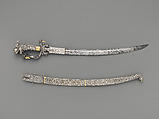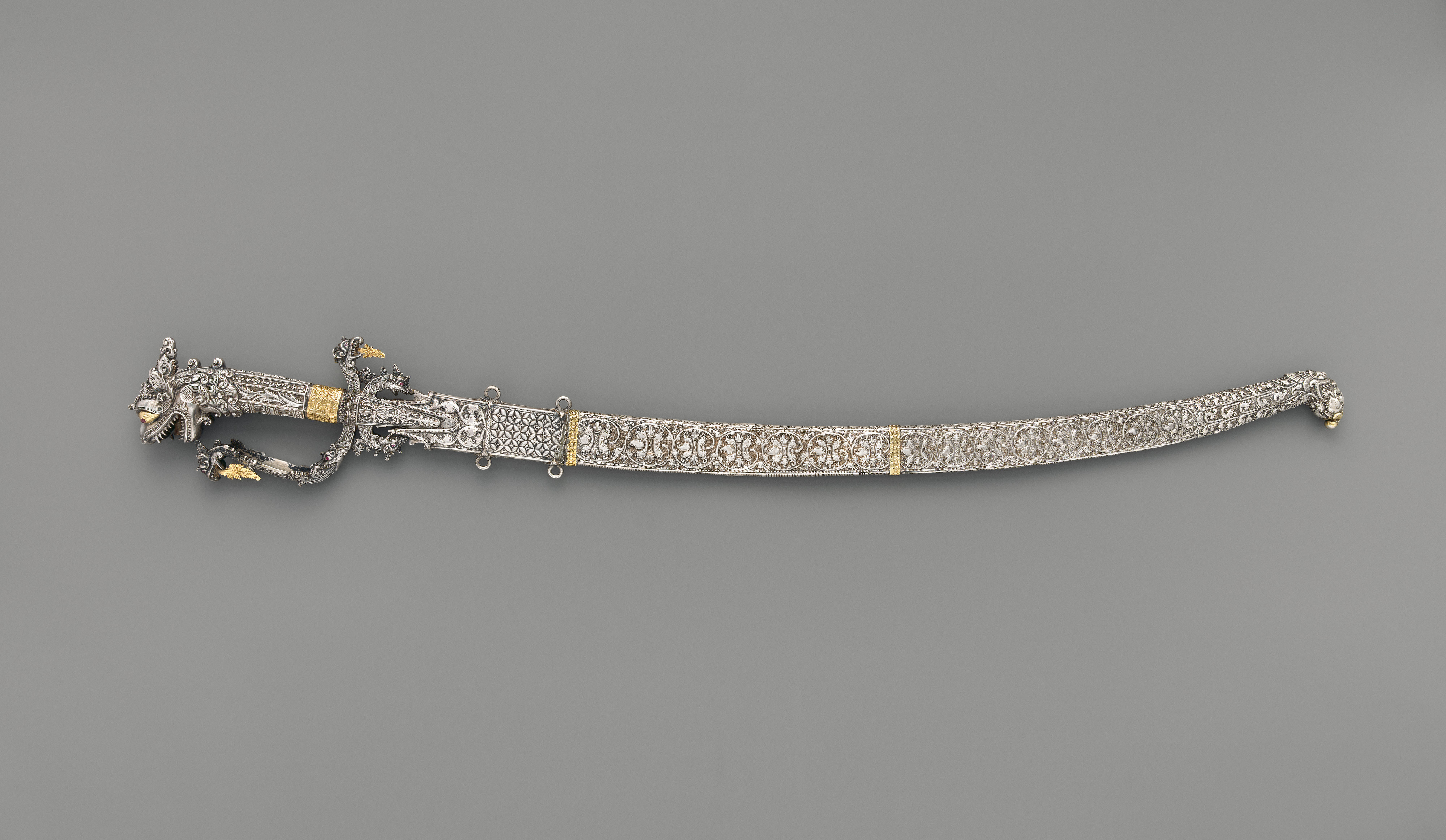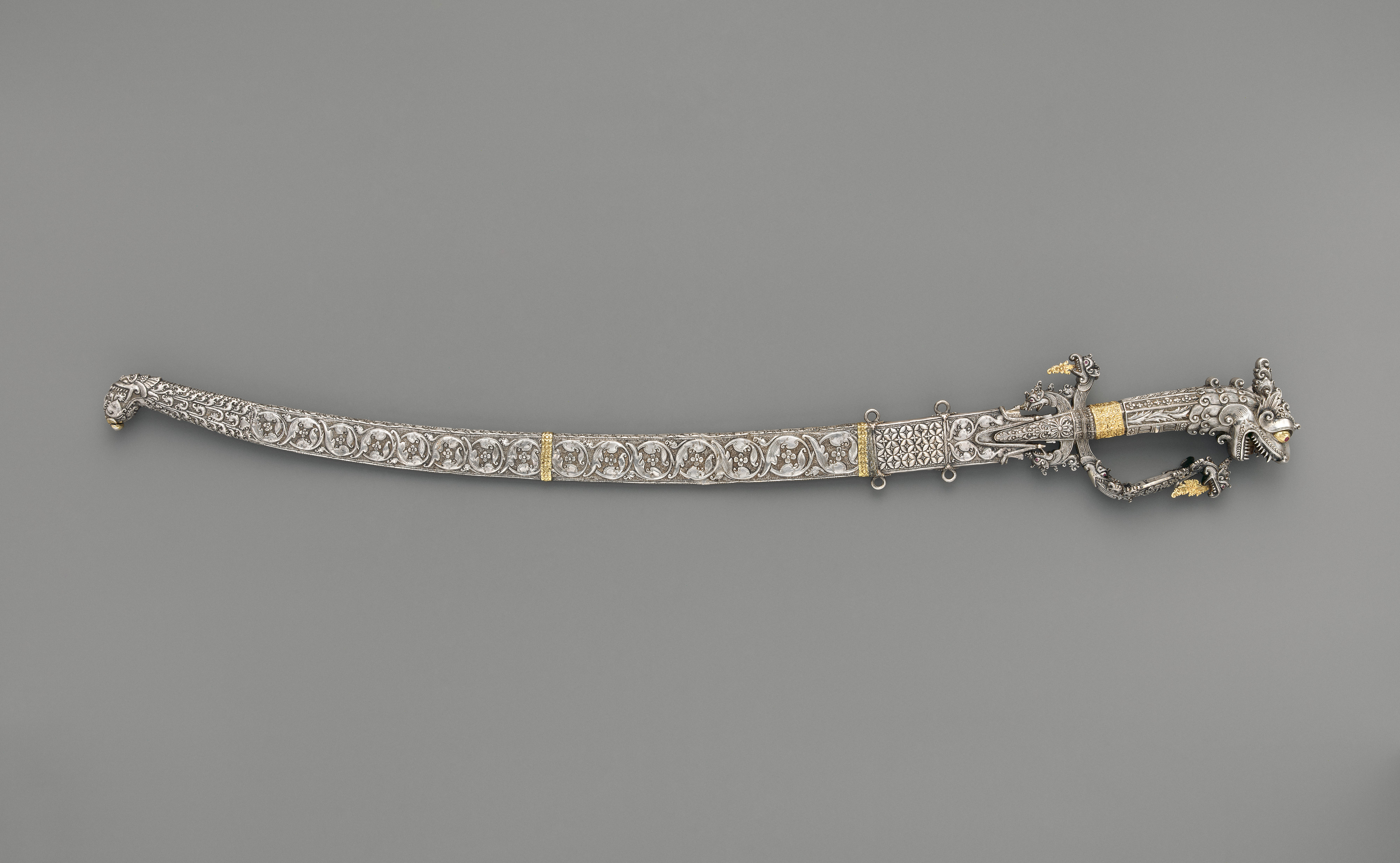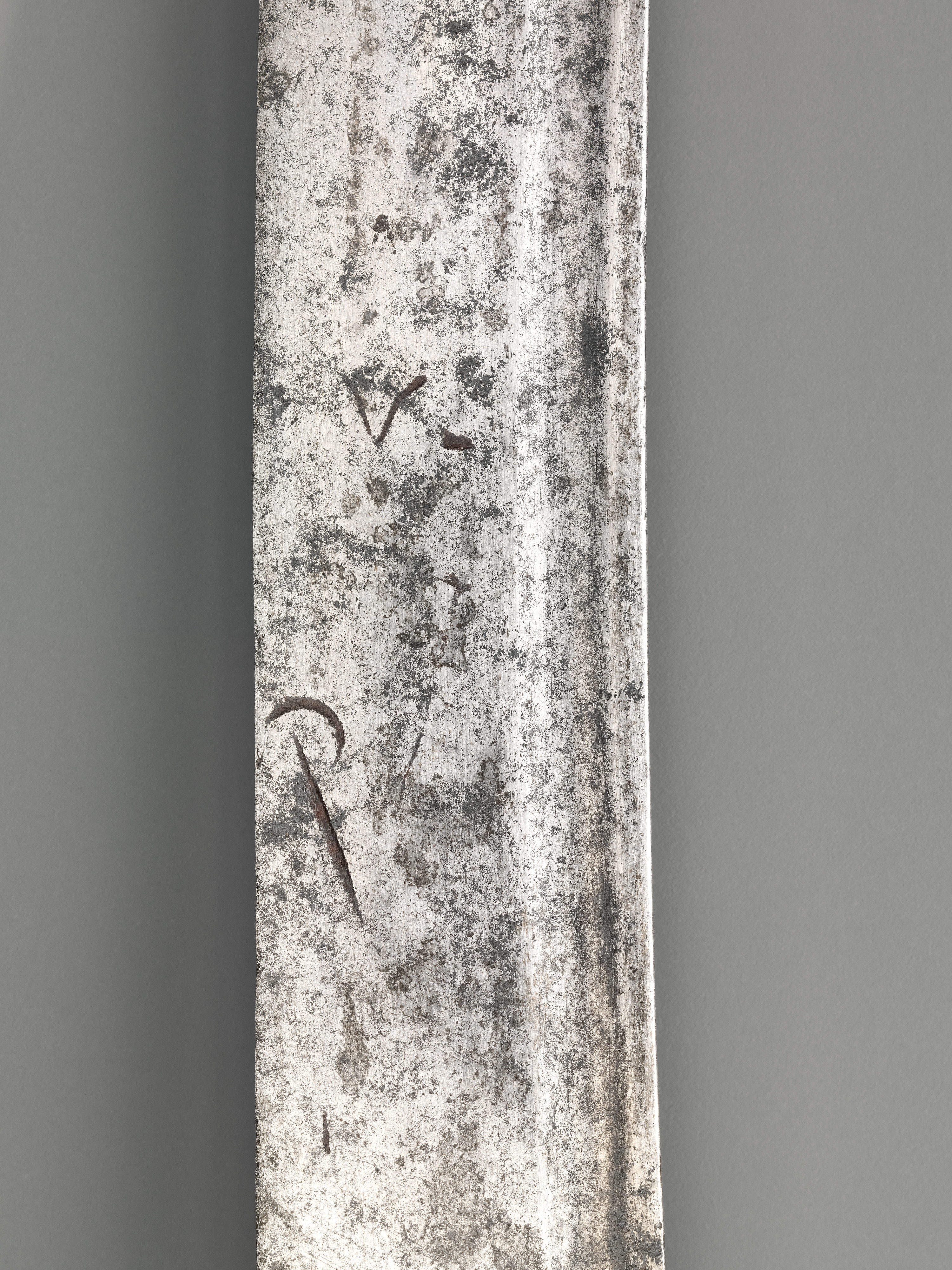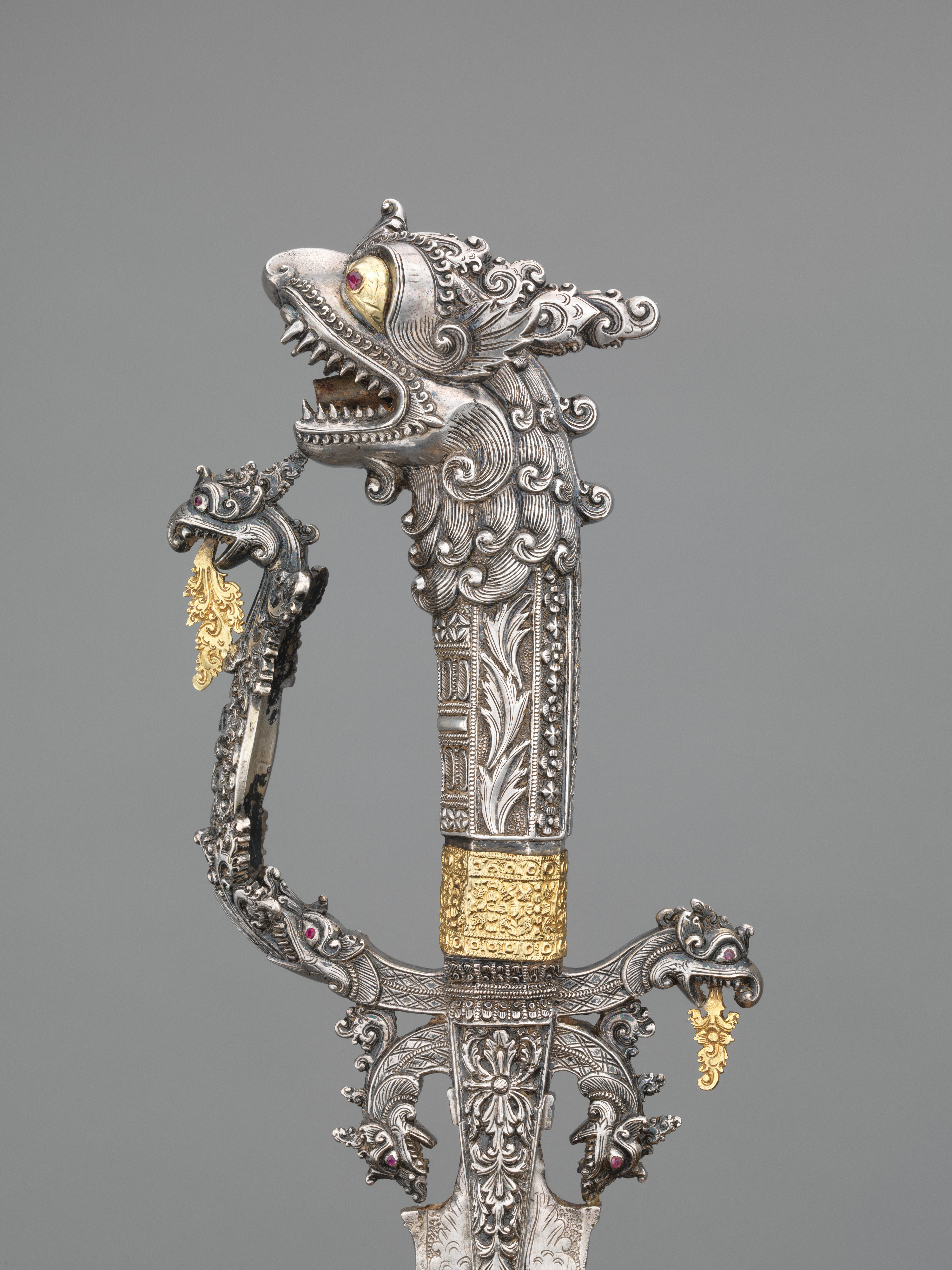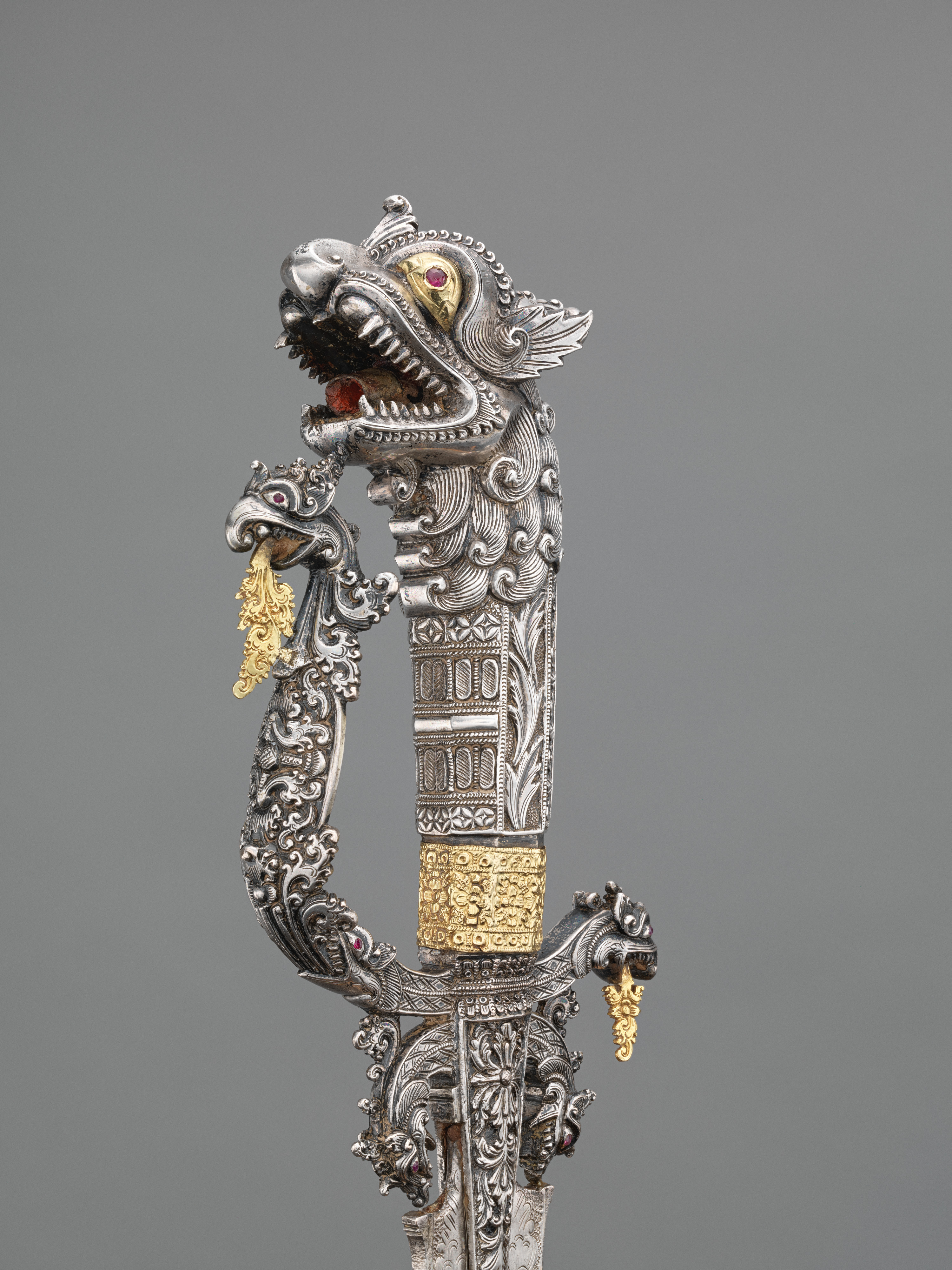Sword and scabbard (Sinhalese: kasthane)
Not on view
The sword has an exquisitely detailed scabbard with embossed decoration, chased and chiseled in low relief, and a bejeweled hilt set with rubies in gold mounts. As is typical of Kandyan sword design, the pommel resembles the head of a lion (simha), the signature motif of the Kandyan period and insignia of the ruling household. The lion, elaborately cast and chased, is entwined with the liya-pata vegetal motif, and mythical creatures (yali) breathing flames.
This style of lion-headed dress sword, worn as a signifier of rank, and particularly to mark ceremonial occasions, is a Sri Lankan invention. The sword type, with a long curved blade and animal finial hilt and guard, is of European origin, and may be linked to the presence of succession of European trading companies in Sri Lanka, especially from the 17th century onward. It has its antecedents in the European short hunting sword (hanger or cuttoe) that became popular among gentlemen officers from the mid-17th and throughout the 18th century. The immediate source is likely Dutch, as the Dutch East India Company (VOC) routinely gifted swords and assorted mechanical novelties to the Kandyan court as part of a broader strategy of securing trading concessions. Some examples of these swords, with their Sinhalese decoration, have VOC blades, and it appears that most of the blades used in kasthane are of European origin.
The uniqueness of this Sinhalese sword type lies in the elaboration of decoration, with the bejeweled lion’s head hilt superbly modelled and detailed, with gold-set gemstones in the eyes. The animal terminals on the pommel, cross guards and knuckle guard have a long Indian tradition as well as existing in European weaponry, so the inspiration for the Sri Lankan version is likely a fusion of these disparate influences. The two cross guards (quillons) are in the form of projecting yali, part-lion, part-bird (serapendiya), of which one guard returns to join the hilt as the knuckle guard. Details are reserved in gold, and include vegetal flames that hang pendant from their open jaws. The grip is octagonal with alternating patterns. The scabbard is finely decorated with a diaper pattern register with four rings for attaching to a belt, followed by scrolling vegetal and floral patterned repeats, interrupted at intervals by two gold bands, and culminating in open jaws of a mythical creature (kirtimukuta-yali) emerging from foliage.
These swords appear in depictions of chiefs and noblemen of the Kandyan court, as recorded in late 18th century Dutch paintings of VOC audiences at court and the receptions of Kandyan officials at the VOC headquarters in Colombo. They likely also served as diplomatic gifts from the court to European visitors, and found their way back to Europe where they were widely admired. On occasions they appeared in aristocratic portraiture, as seen being worn by Sir Alexander Popham (d. 1669) in an equestrian portrait dated c. 1650.
Due to rights restrictions, this image cannot be enlarged, viewed at full screen, or downloaded.
This artwork is meant to be viewed from right to left. Scroll left to view more.
